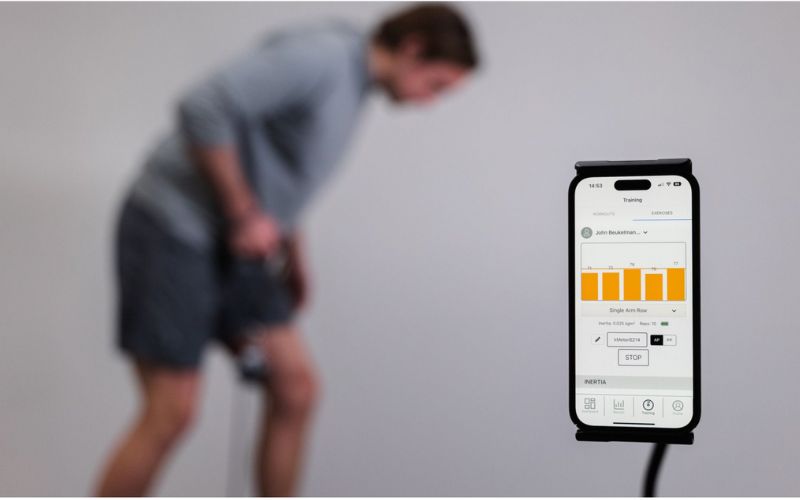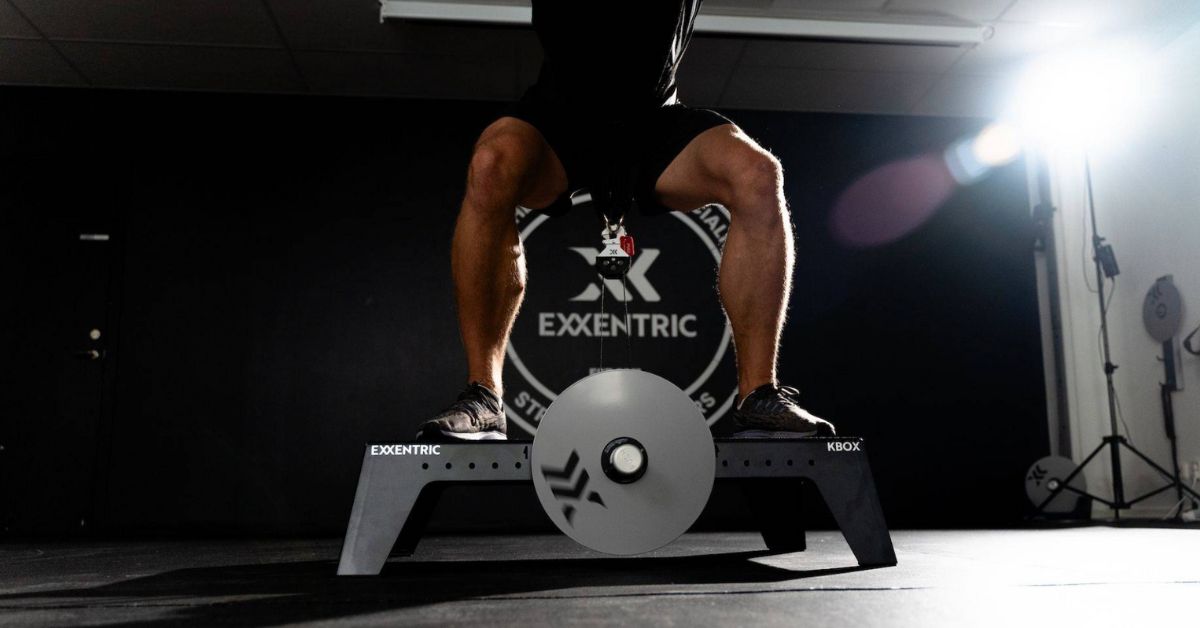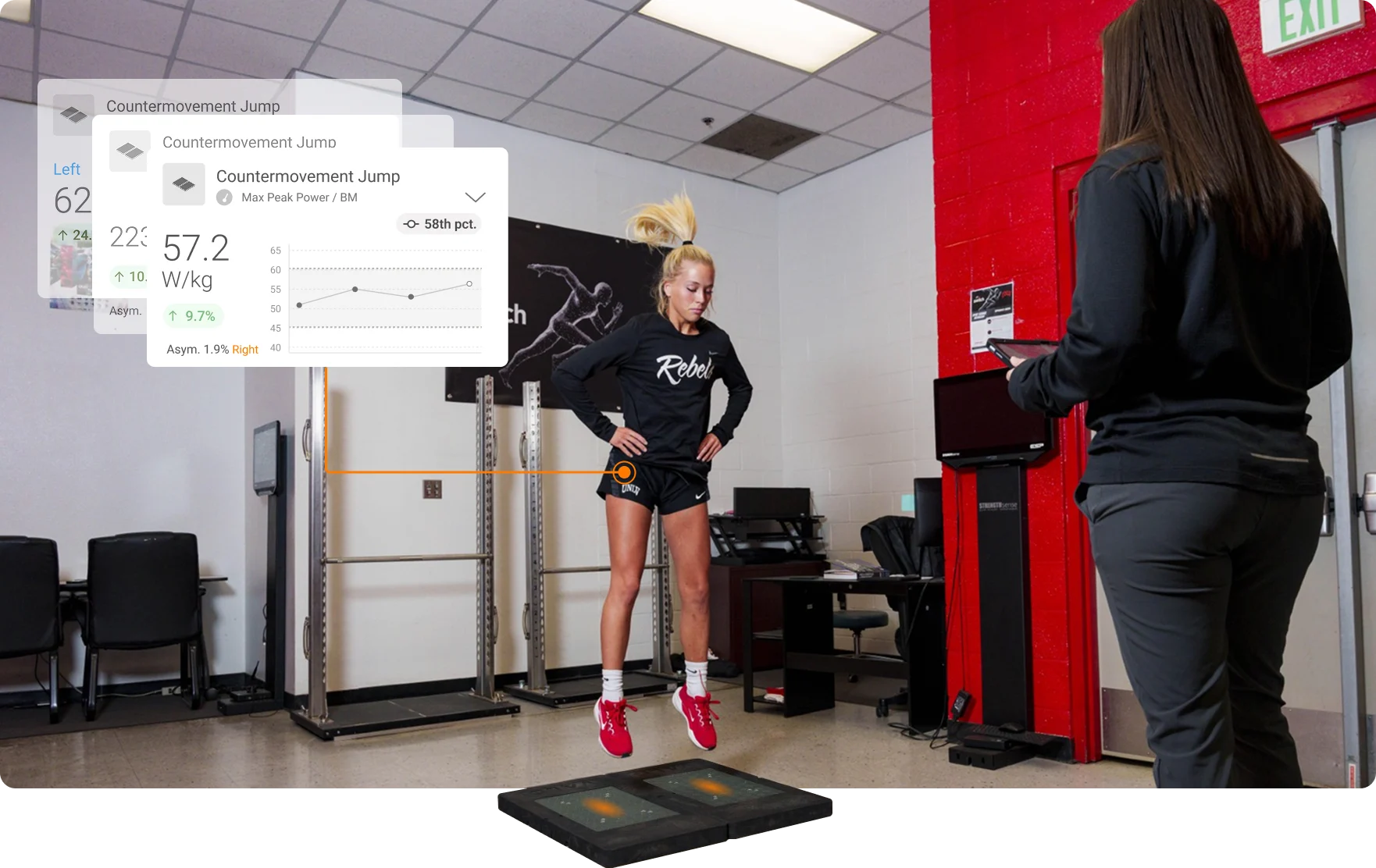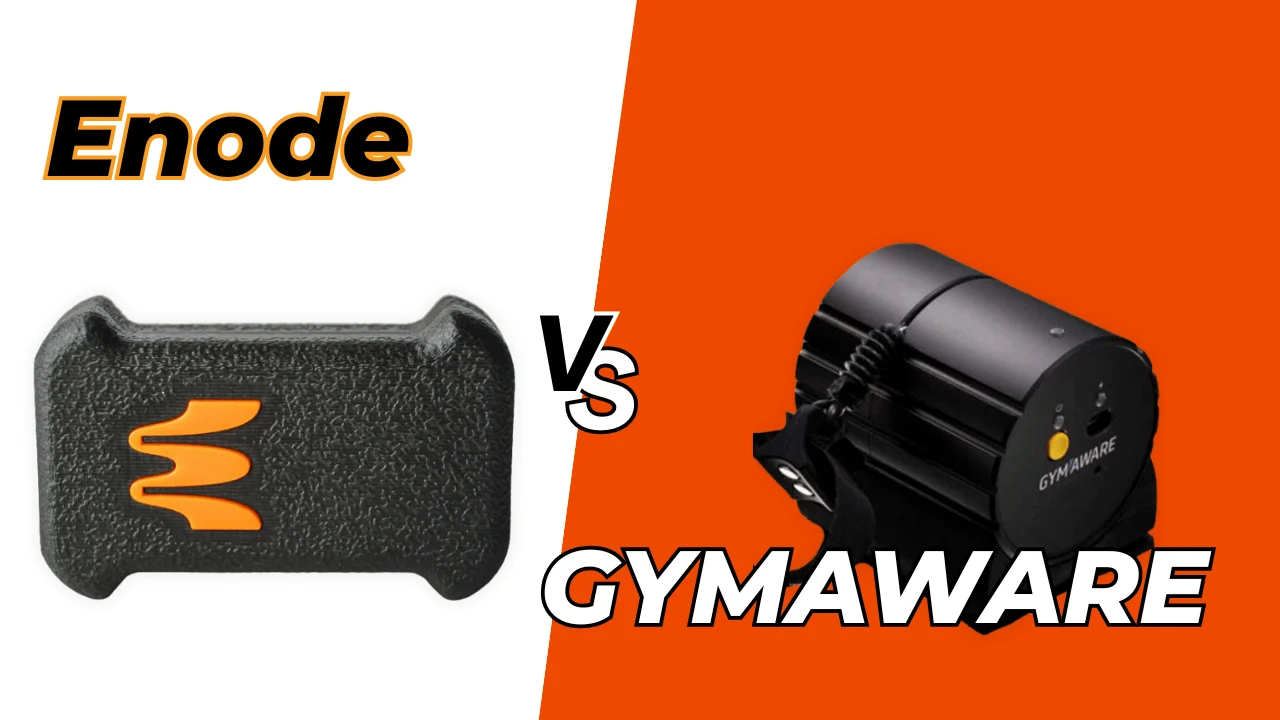Flywheel training technology is a resistance exercise modality that most coaches reading this will be familiar with, but not all will have had a chance to experience for themselves. These tools provide a unique stimulus, unlike other forms of resistance training. In this new and updated article, we’ll do our best to articulate what exactly you’re getting out of this stimulus, who could benefit, as well as explore the best market options.
Keep in mind that while much of the current interest in flywheels stems from interest in eccentric training, the reality is that flywheels are more about adaptations that come from redirecting momentum and being able to unlock the ability to load new movement patterns in this capacity. They are not necessarily providing a true eccentric overload. Isoinertial training is old news, but the new companies providing equipment are also providing fresh ideas that dramatically improve the outcomes of training.
Before the Space Race: A Very Brief History of Flywheels
Usually, the story of flywheel training starts with Per Tesch and NASA, but the truth is it’s likely somewhere between the first potter’s wheel and the 1970s when isoinertial exercise machines were invented. The idea was born from a need to prevent forms of osteoporosis and muscle atrophy in astronauts due to the absence of gravity. Of course, traditional free weights are literally built on the premise of gravity, so this meant scientists needed to figure something else out—enter earlier forms of flywheel training.
Flywheels are used today in other industries outside of sports equipment, so they are not unique to exercise. Sports training flywheels are simply disc-based machines that spin and provide an efficient way of conserving energy, usually through squatting or pulling motions. Flywheels are not eccentric overload machines that increase the force beyond the concentric contribution from the athlete. The machine does not create eccentric overload; it’s the chosen exercise technique in receiving the load that is truly an increased eccentric muscle action.
Sports training flywheels are simply disc-based machines that spin and provide an efficient way of conserving energy, usually through squatting or pulling motions. Share on XA variety of companies now provide flywheel training devices, with some having taken the equipment to new levels with their designs. For the most part, the evolution is more refinement, less quantum leap. The reason is obvious: Flywheel technology is primitive and exercises are, for the most part, ancient. So why the increased popularity of flywheel systems? The answer is simple: The science is gaining (pardon the pun) momentum. The proponents of loading the body to assist in rehabilitation—usually with more aggressive approaches than in the past—are driving interest in flywheel training.
In other words, this is a classic case of what is old is new again (usually due to new understandings). In our original flywheel Buyer’s Guide—published in 2017—there were about a half-dozen international providers with flywheel equipment, with a couple American companies popping up. Flash forward to today and we now see not only more American companies in the field, but more innovation coming in the way of portability and measurables.
Video 1. Athlete using Wheeler Sports Tech flywheel.
Applied Physics & The Biology Behind Flywheel Muscle Contractions
What unique stimuli do flywheels provide to muscles and the nervous system as compared to conventional gravity-based options like barbells and bodyweight exercises? Recent investigations using tensiomyography indicate that flywheels provide a specific stimulus that challenges the neuromuscular system differently, and those differences have shown up in other research studies that include performance testing.
Flywheels resemble an old lawnmower start, and finish with a rapid eccentric rebound. A barbell squat begins with the bar lowering until the athlete redirects the load up concentrically. Each rep usually includes a rest period of a second or more, then the work continues again with another eccentric to concentric pattern. Flywheels have comparatively minimal break in the work being done, as the repetition constantly cycles from concentric to eccentric activity. Additionally, the work being done on the eccentric portion experiences a redirect of velocity from the peak velocity of the concentric side. Thus, the rate of the early eccentric work is dramatically different because free weights respond to muscle tension and gravity.
The work in the eccentric portion experiences a redirect of velocity from the peak of the concentric side. Thus, the rate of the early eccentric work is dramatically different because free weights respond to muscle tension & gravity. Share on XVideo 2. Athlete performs deep squat on Exxentric kbox, via “7 Methods of Isoinertial Training Strength Coaches Need” by Shane Davenport.
Peak eccentric forces are about how the body receives the redirected energy from the flywheel, not about the machine in any way boosting the force. True eccentric overload occurs when the total work done is greater than what was either volitionally provided by the preceding concentric action or what could be done if the athlete was to evoke a maximal concentric action. Researchers are exploring muscle architectural changes or morphological adaptations to muscles that favor performance and injury resilience benefits.
So far, we do know that any eccentric overload that creates a lengthening of the muscle is more resilient to injury, especially in the hamstring group. This is key to understanding how flywheels can benefit different athletes and scenarios, as they can full-on resist eccentric portions of exercise (e.g. fighting to lower a dumbbell curl through a full ROM to potentiate hypertrophy) or intentionally yield into a movement only to redirect at a certain joint angle needed for sport (e.g. a basketball player redirecting force out of a squat partial). The goal in the second case is to intentionally lengthen into a partial ROM before turning on needed tissues in order to train the neuromuscular system to produce force for better force acceptance (and redirecting) capabilities. This also helps capture the appropriate bony alignments needed to rebound out of key joint angles needed for sporting actions.
Video 3. Chris Chase performs a frontal-plane driven hinge using Exerfly.
As one example, hamstring curls using flywheel training do provide a lot of torque, but only when a partner assists the concentric portion does the eccentric work become very interesting to coaches and researchers. Classic approaches like two legs up and one leg down are examples of eccentric overload without the need for a flywheel, and are back in use due to the Nordic hamstring exercise becoming popular in sport again.
Generally speaking, most of the techniques using flywheels are about generating a larger-than-possible force into the machine, such as a partner-assisted motion or bilateral concentric to unilateral receiving exercise. What coaches are trying to do is train the body differently eccentrically or overload it more by using an exercise pattern that exploits the ability to transition to a different motion after the flywheel redirects the forces. An example of this is a squat to Romanian deadlift, where the athlete is squatting concentrically and fighting the eccentric action early with the Romanian deadlift action.
Common Design Choices of Flywheel Training
Flywheels usually come in two options: a platform with a disc wheel or a cube with a cone-shaped mechanism. Most flywheel training platforms are for squatting movements, while the cube options are for total body movements and rotational patterns. Both options can be used for leg training, but the squatting platforms are popular because they are a portable lower body option for soccer teams. Due to the culture of the sport, getting athletes to train before they leave the pitch is a needed benefit for teams. One of the big areas of innovation over the past 7 years has come in the way of more versatile loading bases, from pop-up rack mounts for on the go training as well as more mobile vertical displacement/sagittal loading bases.
Video 4. In this video, Mark Verstegen demonstrates various exercises using the VersaPulley system. The VersaPulley flywheel is a conic option that uses a baseboard for lower body motions.
Platform systems are the most popular in the industry, and nearly every company has a “squat” device of some sort. Most systems are about 1 meter long and half a meter wide, and resemble a table saw. Most of the systems have the flywheel outside and on the top of the platform, but the kBox—an O.G. flywheel option—has the system on the bottom of the platform and uses small legs to keep the flywheel free. The cables are mainly either straps or rope-like materials, and the discs are alloy metals with a hexagonal hole in the middle. Companies usually provide harnesses for squatting, similar to a vest or backpack.
Video 5. Split squats and lunge exercises need a base of support that enables a free movement pattern, so some platform models that are oversized really help coaches get more out of their investment.
Cube systems are mainly conic-shaped flywheels, so the cables can wind and unwind smoothly. Cube or box systems provide opportunities for exercises that require more movement, like upper body exercises that use rowing motions. Cube systems are also solid solutions for squatting and lunging motions, and many American coaches are familiar with the VersaPulley popularity of the early 2000s.
Due to the portability of the machines, coaches tend to use them outdoors or bring them out in the weight room. Some of the companies allow for mounting for clinics and therapy rooms, but for the most part these systems are more mobile in design.
Quantifying the Loading of Flywheel Training
A lot of high-level math is needed to get precise work transferring through a flywheel, as countless variables can interact with energy creation, storage, and redirection. Due to safety considerations, training flywheels collect energy, but don’t enhance the energy or speed they receive. So, treat flywheels like a rubber ball rebounding off a surface, not an underhand softball throw to a home run monster, creating more energy than it receives. Coaches have to trust the companies that build the machines to have valid measurements, since small details like weight and radius must be very precise or the estimations will be inaccurate. Additionally, other details, like the materials used, angular velocity, and additional weights near the edge, require a lot of development time and effort to ensure the calculations are accurate.
Coaches have to trust the companies that build the machines to have valid measurements, since small details like weight and radius must be very precise or the estimations will be inaccurate. Share on XThe estimation of work done with flywheels can be made with different instruments, but for the most part the calculations are done from RPMs of the crankshaft or the use of a positional transducer. Kbox uses the kMeter was already reviewed and systems like GymAware have been used to help display and record flywheel training work in the past.

At the time of this writing, standardization and quality of metrics are still an area of opportunity for innovation in the market. Some companies are doing better than others in this department. However, that doesn’t mean whatever metrics being given can’t serve as a solid proxy for progressive overload progress and objective feedback for athletes to see how they’re improving.
Rotational energy is the consolidated work calculated from all of the sensors and instruments available and, while that is a fair summary, it doesn’t tell much beyond the work performed. Coaches and therapists at first want to know how much work is done per repetition of an exercise, but as they become more experienced, they are likely to want more specific context—such as the time frames involved and the distance of motion of each repetition. Unfortunately, much of the issue with flywheel equipment is that the sensors are on the machine instead of the body. While it’s fine to see how a human interacts with a machine for the purpose of quantifying output, we also need to know how athletes create the forces to understand how training is trending up or down. Coaches and therapists must be careful to not rely on one metric or score, as a number in isolation usually doesn’t tell much beyond the result of an action.
While slightly oversimplified, the sports training flywheel is a cable-driven machine that can quantify the work from the pulling action and the work receiving the redirected energy. The challenge is that, in general, stroke distance provides a better way to create force. However, receiving the load quickly usually decreases the distance of work and makes it difficult for the next rep to have the same concentric output. Also, if the athlete can lower their body to a deep receiving position, they may not be strong enough to handle the abrupt forces on their joints. The unique back-and-forth motion of the flywheel systems are a challenge to perform and quantify, as the need to see specific work done on parts of the body is far different than on the body as a whole.
Top Market Options

Exxentric – This is the system that may very well have been most American coaches first introduction to flywheel training. Founder of the kBox, this Swedish company provides a series of platform options that use a band- or strap-based flywheel. The cardinal difference with the kBox is that it has a flat top; the flywheel crankshaft is under the platform, but it requires legs to keep the flywheel disc from hitting the ground. The product provides an excellent opportunity for those wanting to do deadlift movements and deep squatting, as no machinery is near the foot area. The kBox series has an oversized pro option, as well as a lite option for maximum portability. The strongest feature of the product, besides the flat foot area, is the kMeter, the sensor that transfers the RPMs of the crankshaft to useable data on iPads and iPhones. If it ain’t broke, don’t fix it—Exxentric has continued to deliver on a strong original offering without as much wheel reinvention as some of these other brands.
VersaPulley – Heart Rate Inc., the American company that makes the VersaClimber and other products, was founded in 1978. Known for their VersaPulley product line, the company has a few models of conic isoinertial products, and they range from a portable to a platform to a cube hybrid system for more specific leg exercises. The mid-range product is a wall-mount system, and the company offers a rep counter and a display, but it’s not a tool that indicates actual force or power. Many strength coaches in the U.S. will remember VersaPulley was endorsed by Mark Verstegen before he transitioned to Keiser. Phil Wagner, the founder of Sparta Science, endorsed the product more recently.
Exerfly – Exerfly is a New Zealand company that has excelled at taking all the classic components of flywheel training and improved upon them with its motorized resistance, versatile loading bases that unlock different vectors of resistance for more resistance patterns, as well as delivering on measurables. Many private sector coaches, teams, and rehab specialists employ Exerfly as their flywheel of choice. We mentioned continued education being a driver of interest in flywheel integration and Exerfly—to their credit—are pushing the educational component as much or more than anyone else in the space.
Wheeler Sports Tech – A relatively new-to-market option, Wheeler offers its own spin on traditional flywheel tech and—similar to Exerfly—delivers on a high quality, durable product. As of now, Wheeler has a larger presence in other countries than it does in the States.
HandyGym Dynamic – Another recent entry with something new to offer is HandyGym. What makes them unique is their ease of portability for mobile training options, travel, as well as an ultra-lightweight unit capable of many setups within a gym setting. They blew up during the gym closures born from the lockdown, even gaining traction in the NBA and other leagues that were early to restart. A strong option for mobile trainers, those looking for a cost-effective solution, sports teams on the road, and those who want a singular device to open up different movements.
Proinertial – This Spanish company has been in business for about 15 years and is growing internationally. They provide multiple machines besides platforms, and can also customize for a very small fee. Their systems use Chronojump technology to calculate work performed by the user in training, and feature a rope-driven flywheel. Their products are very popular in soccer clubs and training facilities. Prointerial’s product line includes a platform option with oversized boards for tall athletes, and their slant boxes are permanently fixed for lateral lunges and squats. The cube products are portable and can be mounted to walls, and they even have a leg press.
Desmotec – Similar to Proinertial, this Italian company has two primary models. Each model has customized features that are optional, like sliding mounts and a specialized platform option for therapists. The system is popular in soccer, and it has been on the professional market in the U.S. for years. The products are well-crafted, and their attention to detail makes them the sports car versions of flywheels. Several professional athletes have their own home systems and, like the previously mentioned companies, Desmotec offers a complete line of accessories. They also offer perhaps the most developed software, and data is captured via a linear positional transducer.
Space Wheel – The Space Wheel system is a combination product that is one part platform and another part pulley option. The Space Wheel doesn’t currently offer any sensor to calculate output, and the system is very barebones. The one strong area of note is that the product has a platform offering that’s quite portable, although others have since followed this (and the kBox lite) path, here. The Space Wheel is known for its spiral decorated disc that nearly hypnotizes the viewer due to the design. Space Wheel is a very small Italian company and has some traction in the market, but they’re not as visible as Desmotec.
nHANCE – nHANCE is known for their collaboration with pioneer Dr. Per Tesch, and their product line includes other options, like a leg press and hamstring machine. The squat platform system offers a connection to a third-party sensor for output measures, and has a long history with teams. One of their most popular products is the YoYo Leg Curl machine, which elicits a high amount of EMG activity. It is known to place a lot of strain on hamstrings—enough to create adaptations beyond typical curls. The company has mostly stuck to its guns in terms of offerings.
RSP – From Vigo, Spain, RSP has three systems: a pure conic option, a wall system, and squat system. Its products are very contemporary and they don’t have any sensors: all are conic-shaped flywheel systems except for the platform. Because they provide a smooth experience, the products are known for their rehabilitation benefits, likely for early shoulder strengthening post-operation.
Parting Shots
The price points haven’t changed a great deal since our first 2017 Buyer’s Guide. For the most part, if you’re looking to invest in a flywheel system, they can range from about $2,000-$5,000 USD, and accessories are all priced differently. Most of the time, coaches want the waist belts or torso harnesses as well as some type of rack or portable mount option for more horizontal, force-vector driven patterns. The sensors for quantifying work are often now built into one price or are offered in a package, as opposed to more exclusively being sold in isolation. When buying separate, they can range from several hundred to $1000 USD, and connect to either a laptop or tablet. One additional factor is the shipping cost, which could be free or in some cases add $200 or more to the bottom line.
Educational videos and articles are still the lifeblood for the products, since most sports training courses and textbooks don’t mention flywheels, except in passing. Some courses and conference exist, but they are usually extended infomercials and focus on the benefits of the product instead of deeper science. Exerfly has emerged as perhaps the industry leader in education, though most coaches may wind up learning the most from a combination of research and from following certain coaches who are doing a good job integrating the products into their workflow.
Originally thought of for their associations with eccentric overload, flywheels should be considered more for their ability to adequately decelerate, redirect force, prevent injury, and safely load different movement vector and patterns. They provide a novel stimulus and are a great investment for coaches looking to do the best job possible in creating strong, durable, well-moving athletes.
Since you’re here…
…we have a small favor to ask. More people are reading SimpliFaster than ever, and each week we bring you compelling content from coaches, sport scientists, and physiotherapists who are devoted to building better athletes. Please take a moment to share the articles on social media, engage the authors with questions and comments below, and link to articles when appropriate if you have a blog or participate on forums of related topics. — SF





